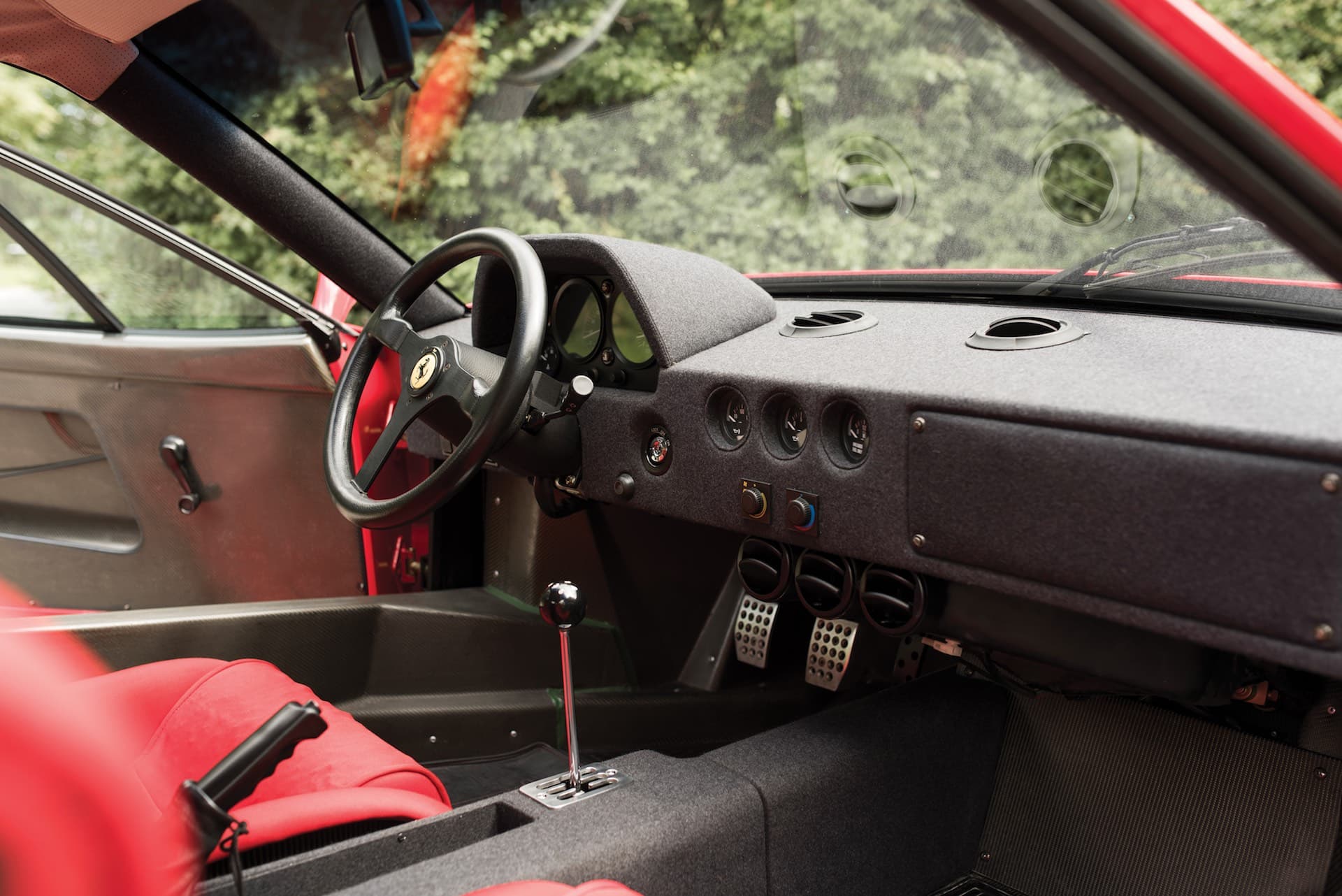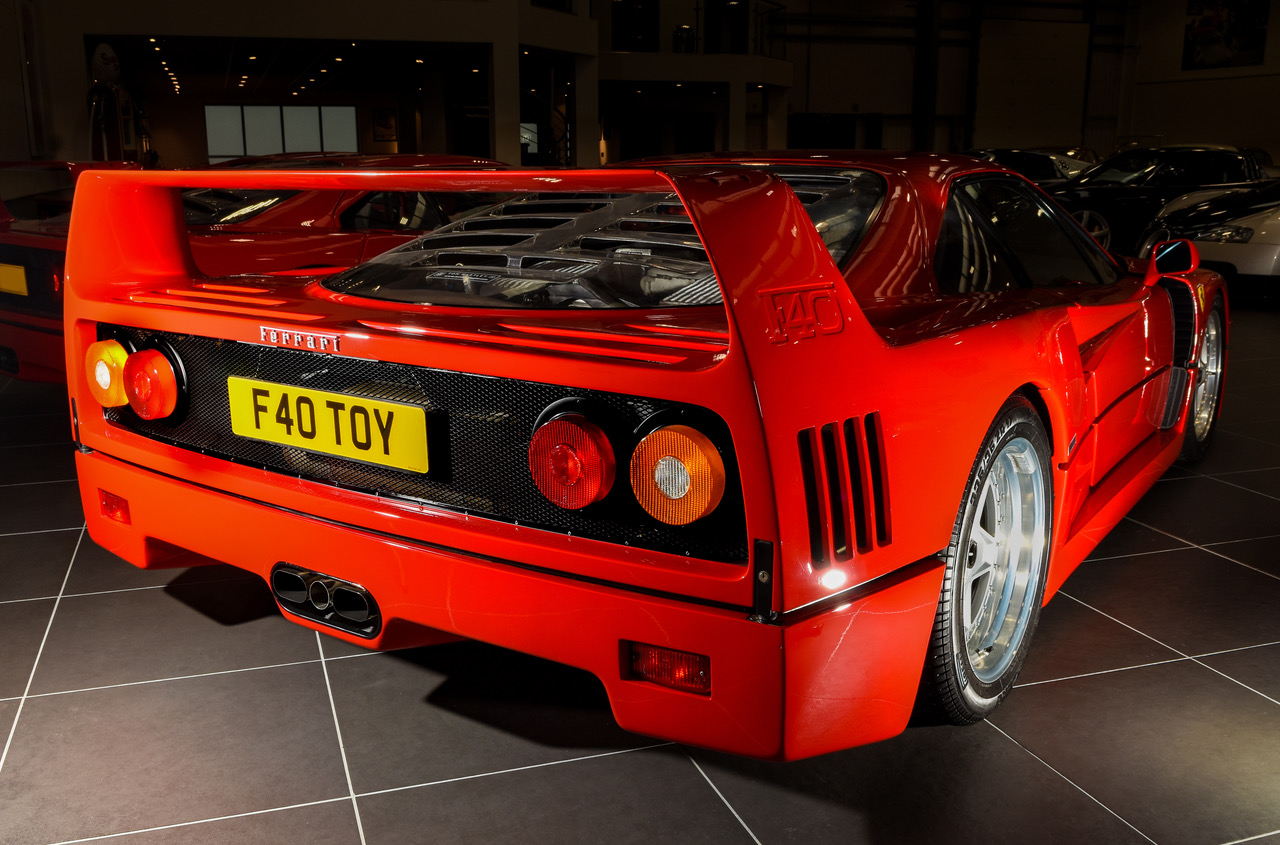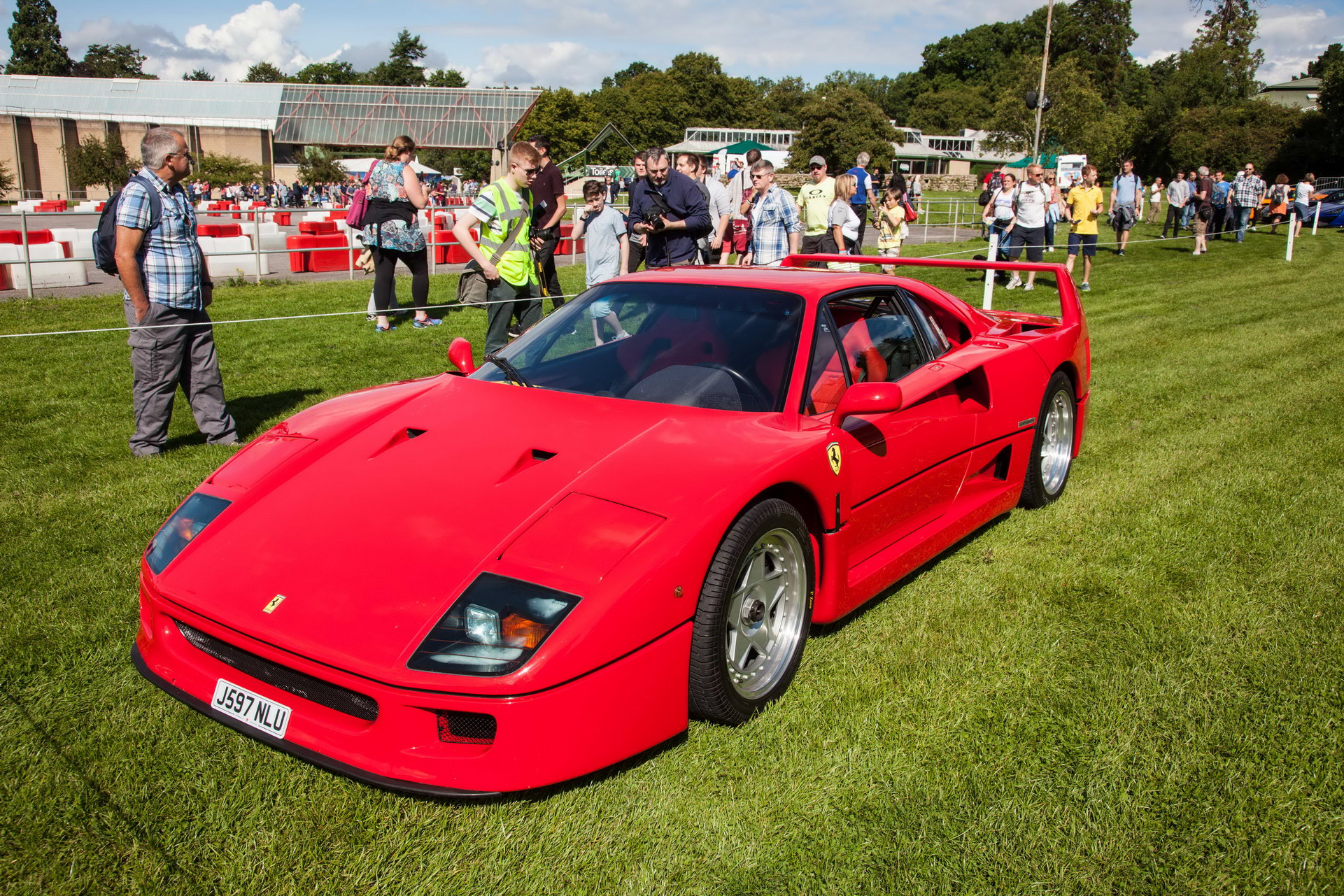I’ll bet there was one car the 12 year-old you devoted more brainpower to than pretty much any other. Sure, you might have had a bunch of cars on your wall, but for most of us there was always one main machine.
Mine was the Ferrari F40. First regular production car to crack 200mph (320km/h), Ferrari’s 40th anniversary present to itself, last Ferrari developed on Enzo’s watch. I’m sure you don’t need a cheat sheet from me.
The thing is, I wasn’t even sure I really liked the look of it. I mean, it was pretty ugly next to the classically beautiful 288 GTO, the car that preceded it, though what I didn’t know at the time is that the F40 looked very similar to the rare 288 Evoluzione, which was conceived to race in Group B, but left with no party to go to after the class was banned.
There’s Something Special About This One
But ugly or not, I knew it was something special. I liked the Countach too, which had the sexy scissor doors, and it had a V12, meaning it was packing four more cylinders than the F40. But the Lambo was definitely about the pose, where the 471 hp twin-turbo F40 looked more serious, and way scarier. And isn’t that what a supercar should be?
Related: Ferrari F40 Destroyed After Catching Fire In Japan
There was no YouTube back then (yes, I’m really that old) so no way for me to know what kind of noise might fire out of those three tailpipes. All I had was some grainy pictures and a bunch of words I only half understood in magazines like Autocar, Car, and Road&Track, and my imagination.
What would it sound like? What would it be like to stomp that drilled pedal and feel those two turbos spool up? Would I be disappointed if by some miracle I ever managed to get behind the wheel?
Judgement Day: So Was It Worth The Wait?
It took me almost 20 years to find out, and, spoiler alert: it didn’t disappoint. And neither did the other two F40s I’ve been lucky enough to drive since. I’ve tried plenty of desirable cars that I wanted to be great, but weren’t. The BMW Z8 and Alfa Romeo 8C spring to mind. But every time I’ve driven an F40 the experience has been as exciting, terrifying and absorbing as the 12 year old me imagined it would be.
Even just walking around an F40 soaking up the details is enough to get the hairs on your neck standing to attention. The multiple NACA ducts cut into the composite body panels, the fat three-piece wheels, slatted plastic rear window and that giant hoop spoiler set the tone before you’ve turned a wheel.

But that’s nothing compared with what it feels like inside. Before the F40, and even afterwards, for a while, supercars were fairly opulently trimmed. Some, like the Bugatti EB110, even had wood on the dashboard. That’s right, the fastest car in the world in the early 1990s took interior styling cues from your grandpa’s luxury sedan.
But the F40 wasn’t like that. If it didn’t make the car go faster, it didn’t make the cut, and so what if that philosophy made the interior feel like a kit car someone had knocked together in their garage last summer?
Tug the flyweight door closed behind you after you dropped into a proper bucket seat that offers ten times the support of a Countach’s buttoned chaise longue, and you notice there’s no interior handle to open it again, just a thin cord pull that makes Porsche’s RS door pulls look like boat anchors. The plain dashboard is covered in simple felt, and floor is covered in nothing much at all, so you get a clear view of the carbon panels and the green sealant between them.
Not Everything Is Perfect, But Who Cares?
Ergonomically speaking, it’s a mess. The steering wheel is canted upwards like an old Mini’s, and the pedals are heavily offset to the right. Both are heavy to operate meaning you’ll climb out after a long thrash feeling like you’ve just been crippled by your PT at the gym. And then there’s the clunky gated manual transmission with its dogleg shift pattern to master.
Yep, modern supercars and hypercars are about as taxing to drive as a BMW 3-series in comparison, and we wouldn’t blame you for preferring them that way. But every one of the F40’s controls keys you into the action, connecting you to the car and the road, in a way that few modern cars do. The steering, particularly, is standout brilliant. That’s just as well, because there’s no ABS, and no traction control to keep you out of the trees.
Though it wouldn’t see which way a modern supercar went on a track – Ferrari’s own figures say the current SF90 is over 10 seconds faster around its Fiorano circuit – the F40 is still a fearsomely rapid car. Contemporary tests put the 0-60mph time at 4.2 seconds with 100mph (160km/h) coming up 4.1 seconds later. Even 34 years on, those numbers sound pretty strong, and from the way the boost sneaks up and sucker punches you into the seatback, and the commotion going on behind that seat, you’d swear it was twice as fast.
Oh yes, the noise. We’ve seen – or heard – plenty of performance cars lose their voices with the switch to turbo power in recent years, Ferraris included. But there’s nothing muted about the thunder coming out of the back of an F40.
Final Thoughts
Ask me if it’s the ‘best’ car I’ve driven and I’d ask you what ‘best’ even means. The F40 is not as quick as a Bugatti, doesn’t shriek like a McLaren F1 and the bare-bones interior would make a North Korean army barracks look like a great candidate for a Vogue Interiors cover shoot. But it’s a car that lived up to a promise made from the pages of a magazine to the 12-year old me. An F40 is raw, visceral and more than a little intimidating. And if $2m ever fell into my lap, I’d buy it over a newer, faster hypercars in a heartbeat.

